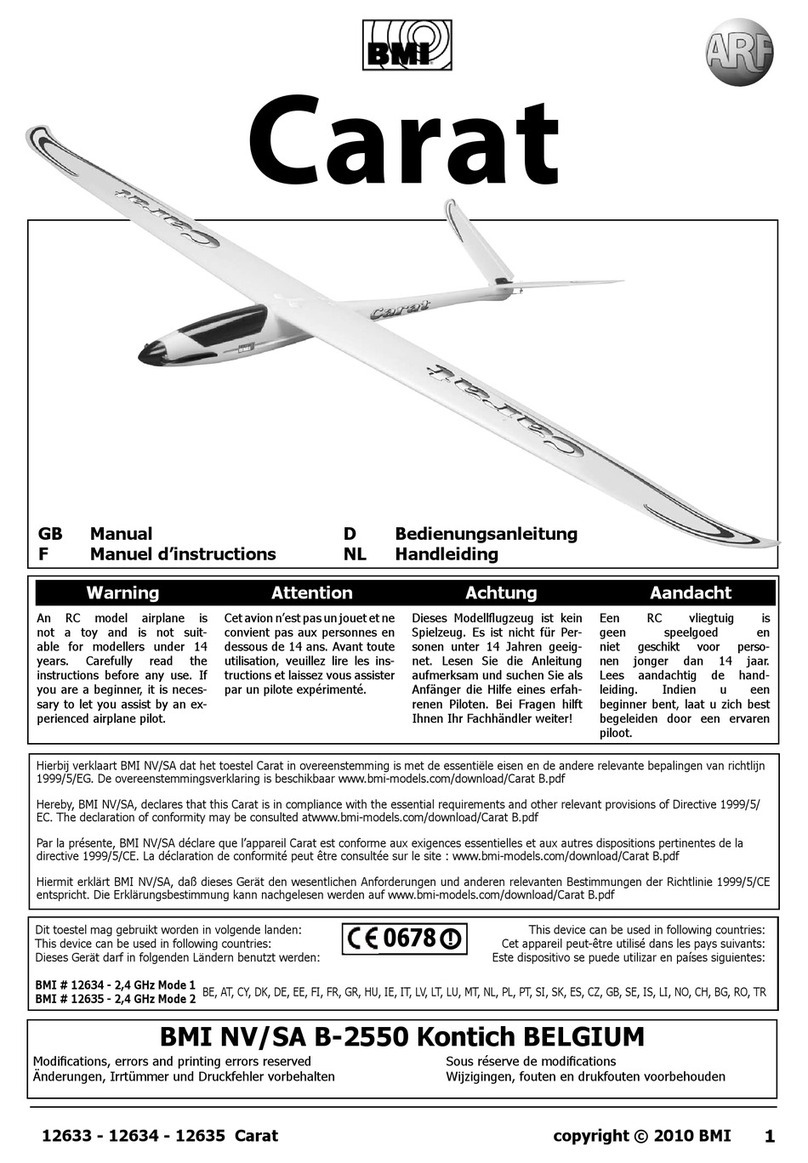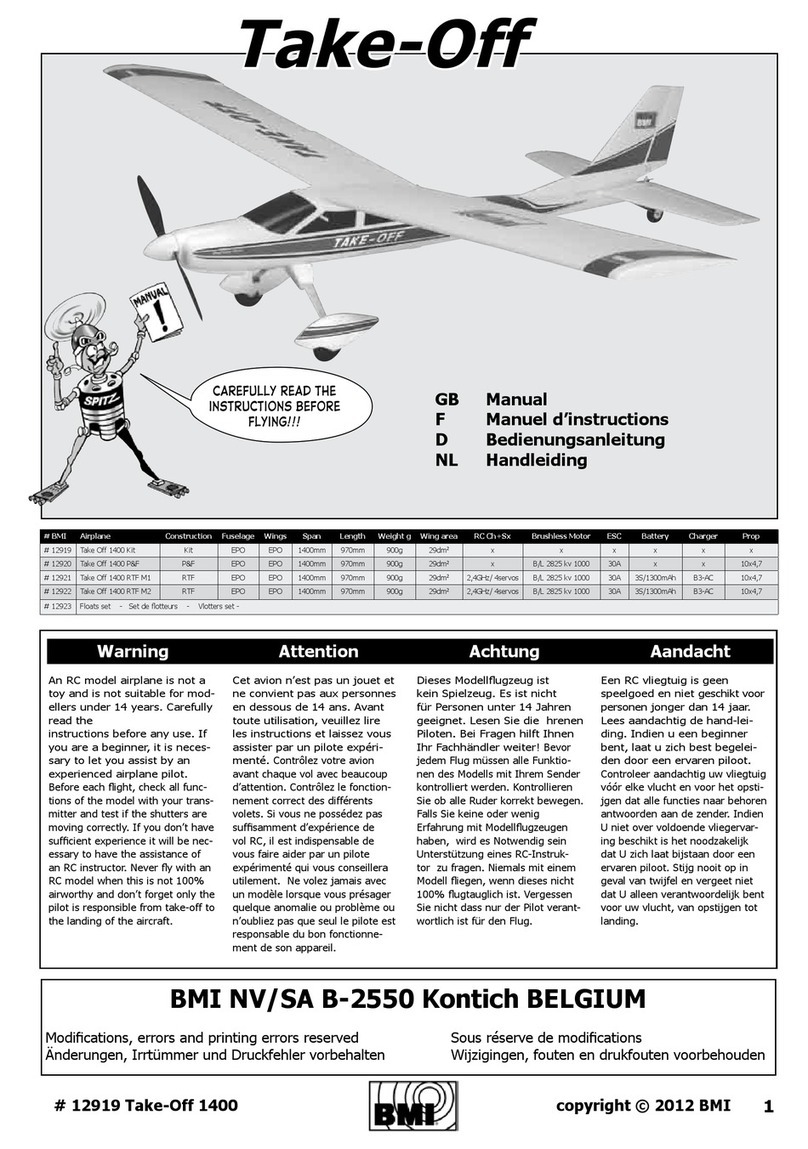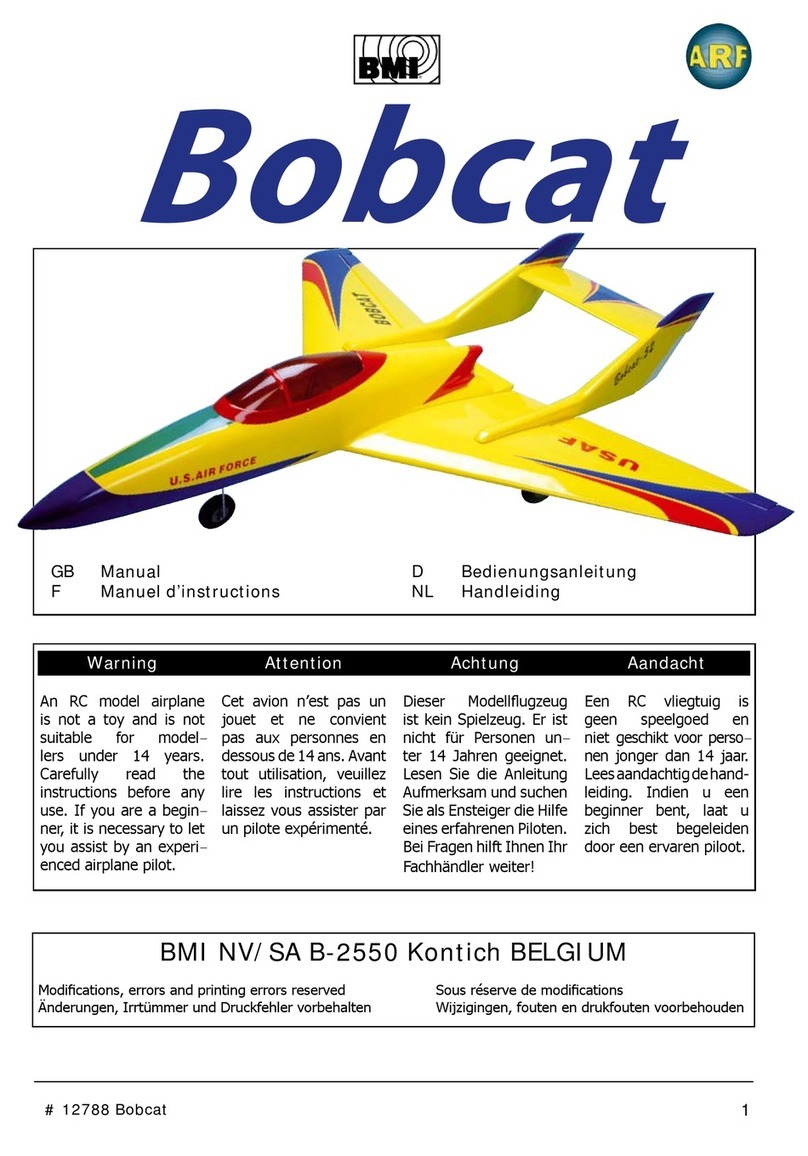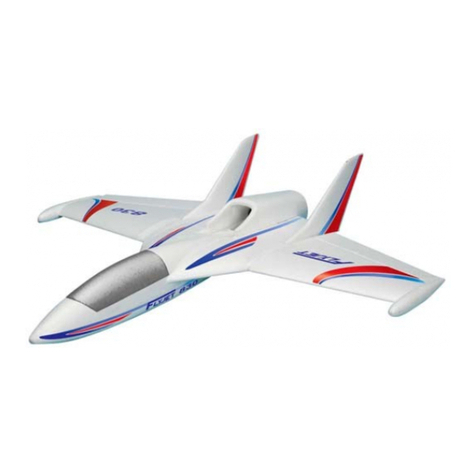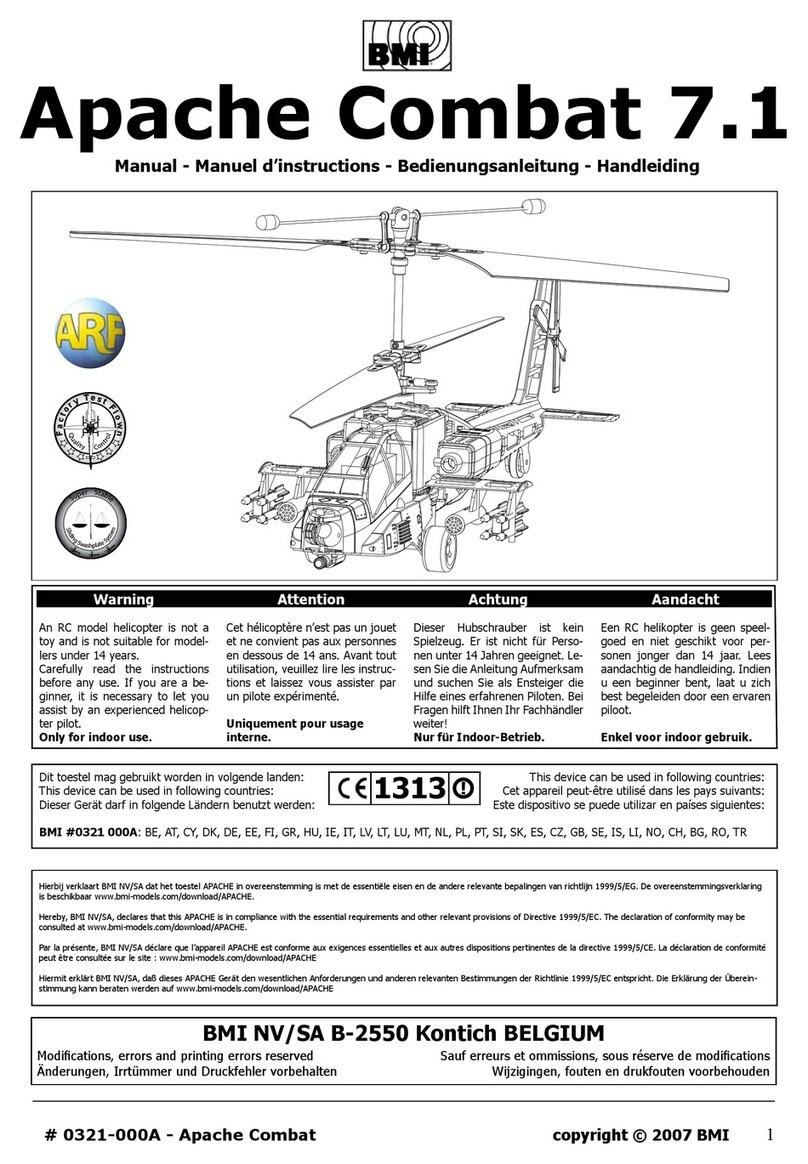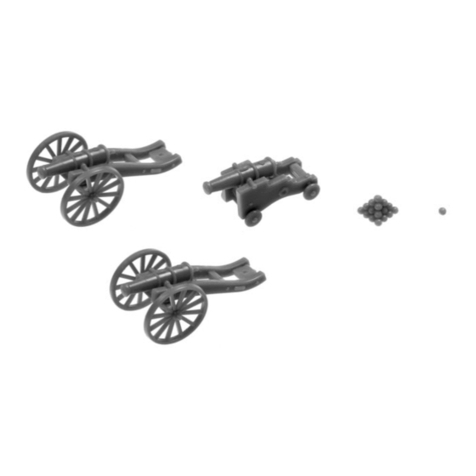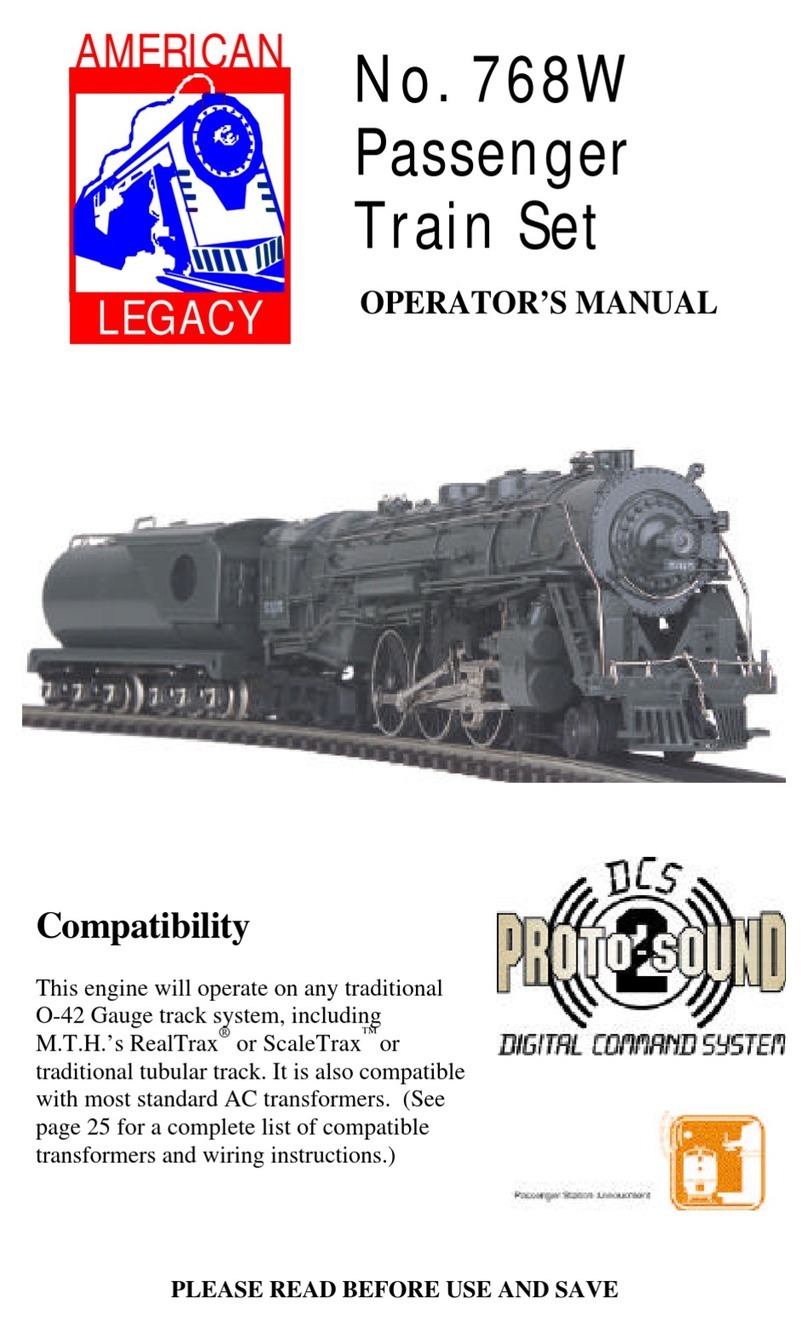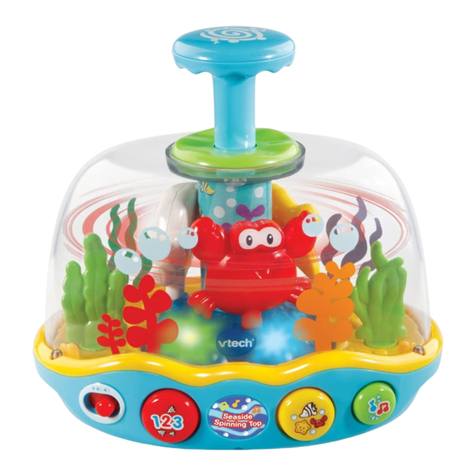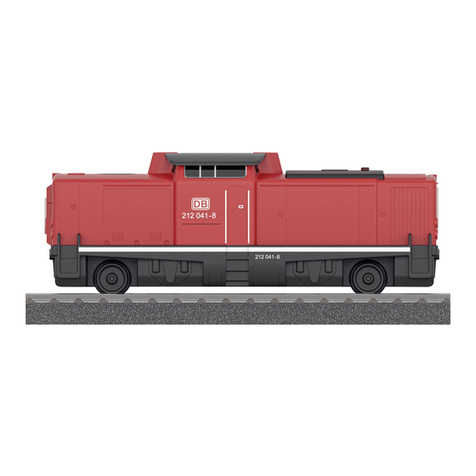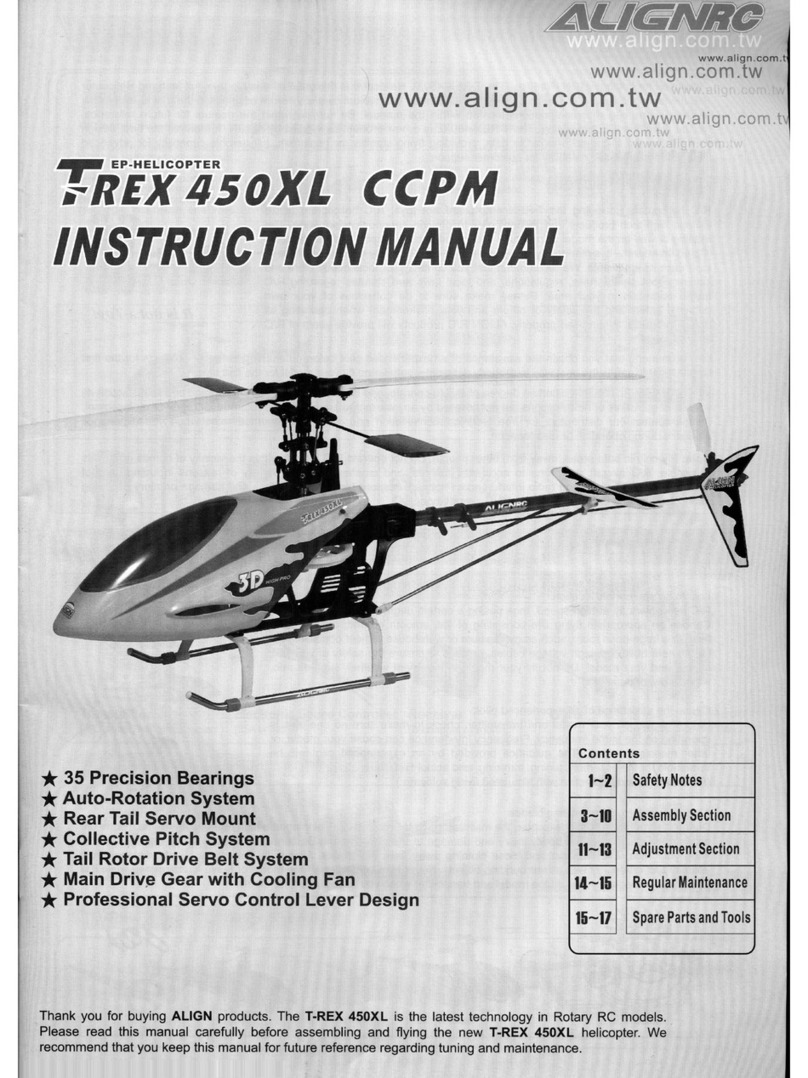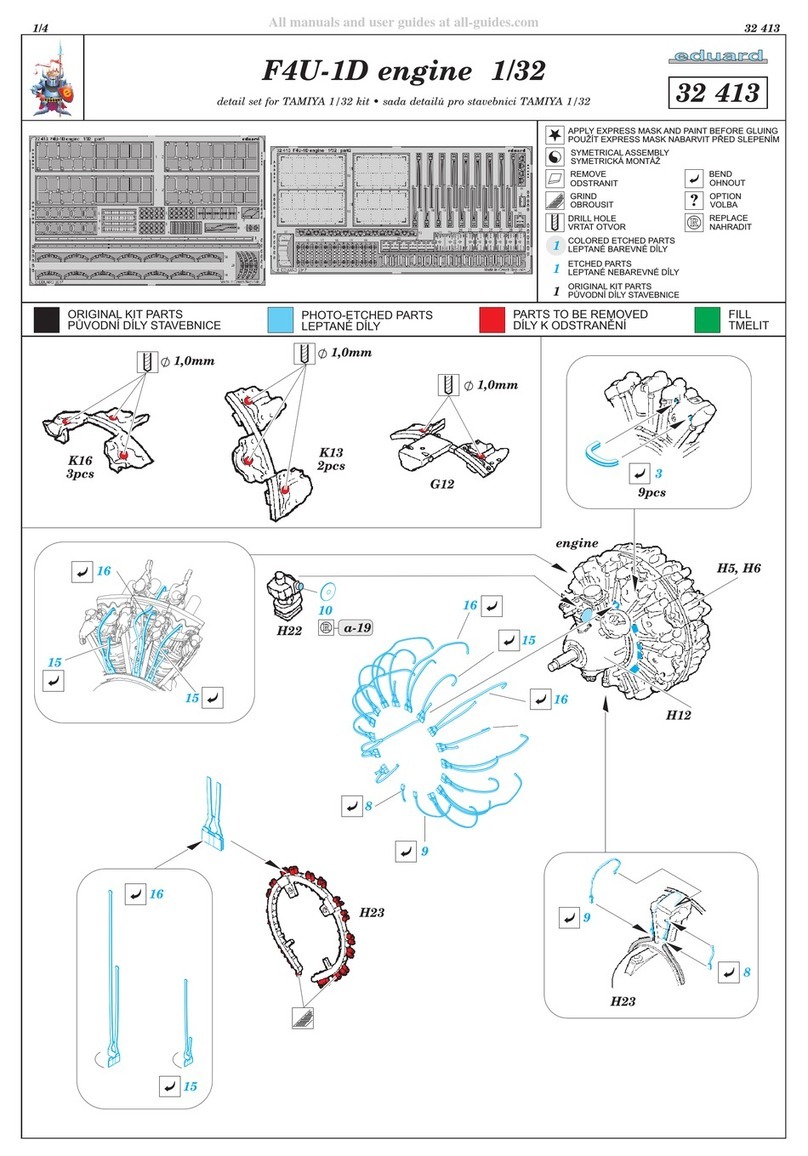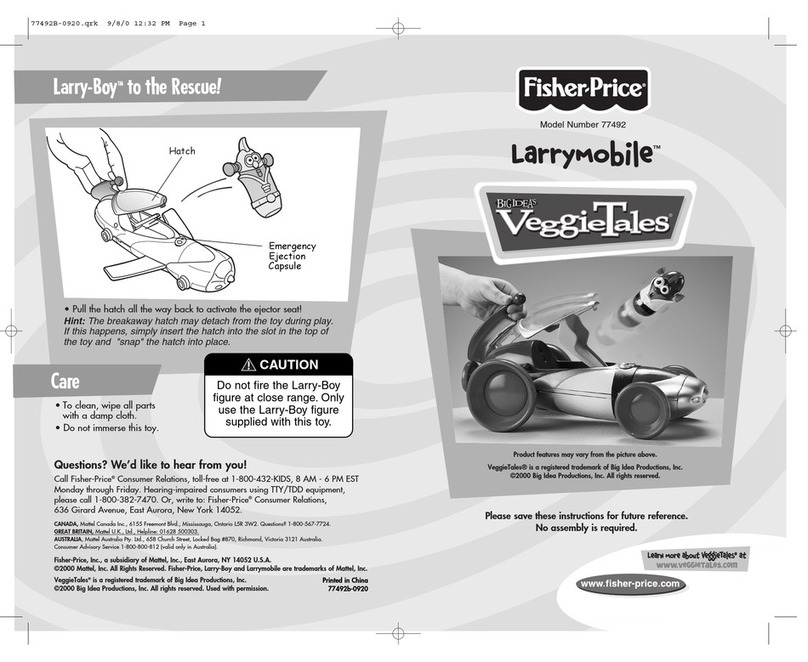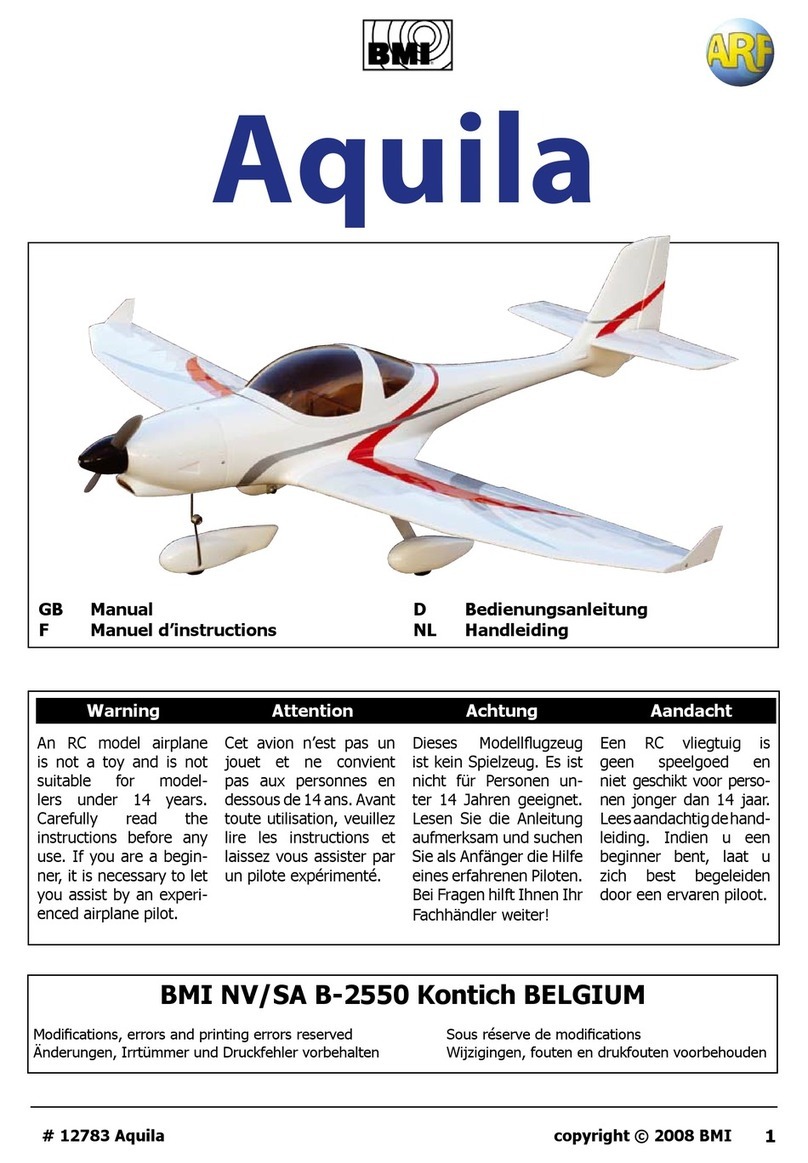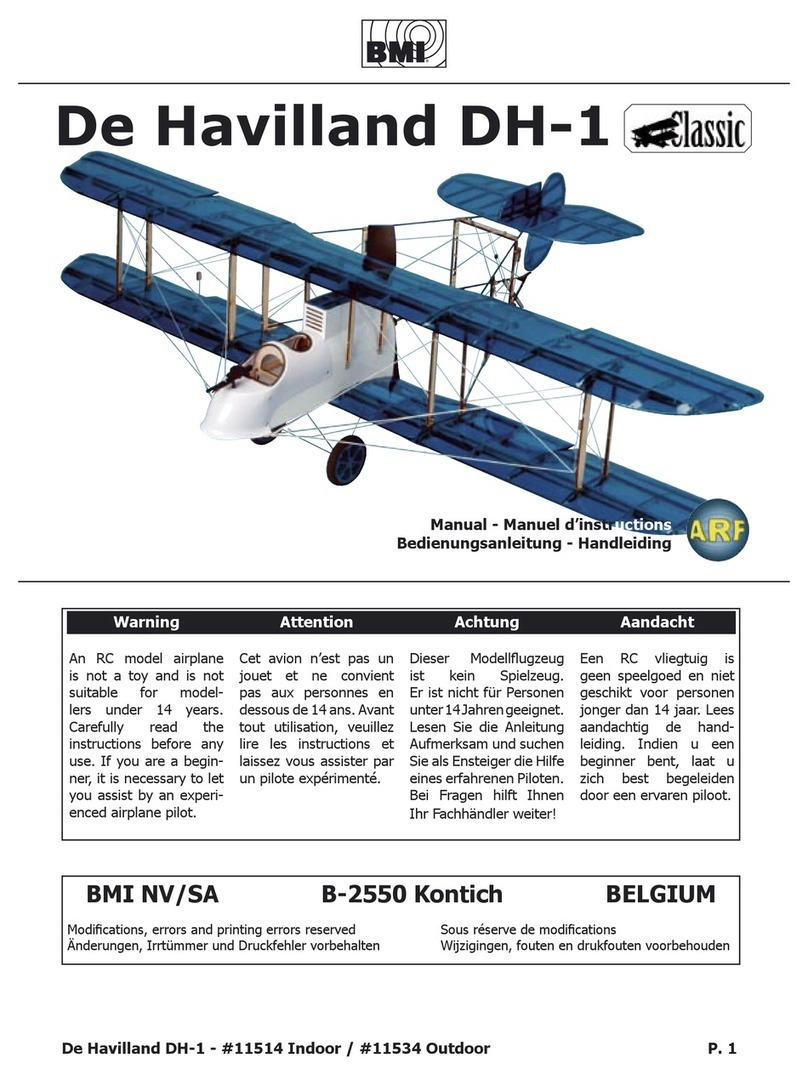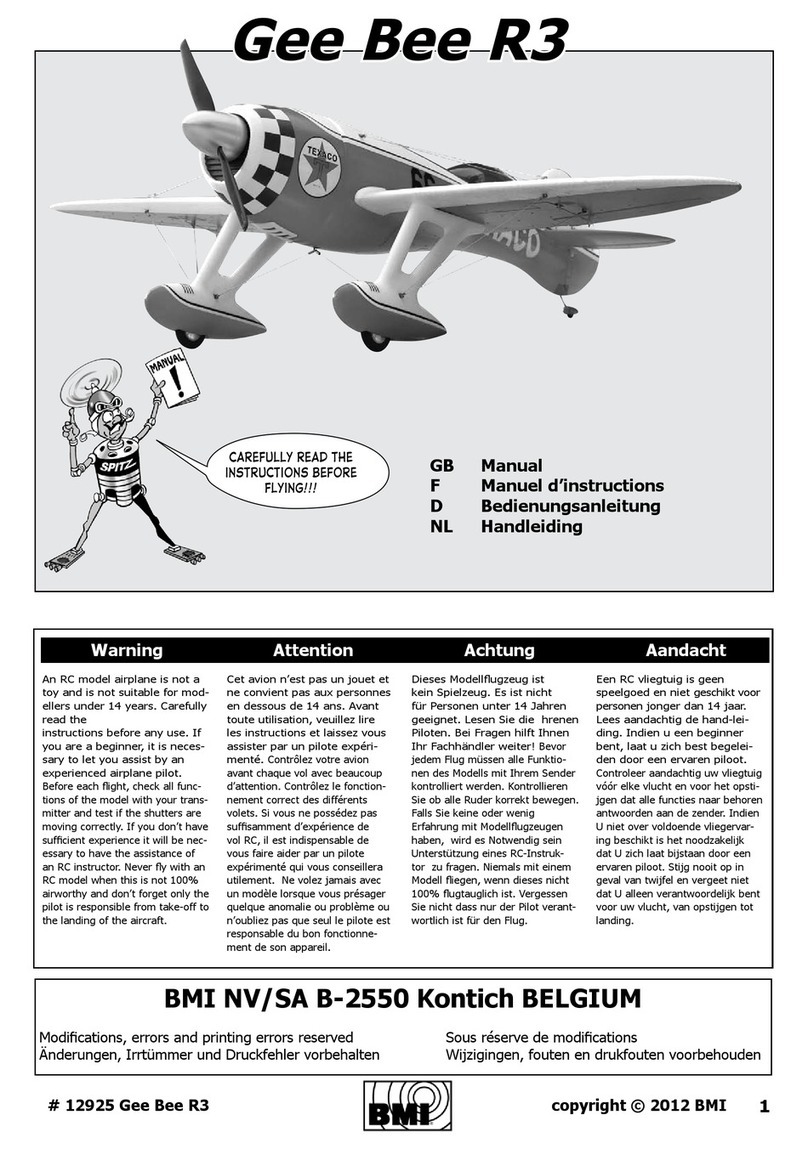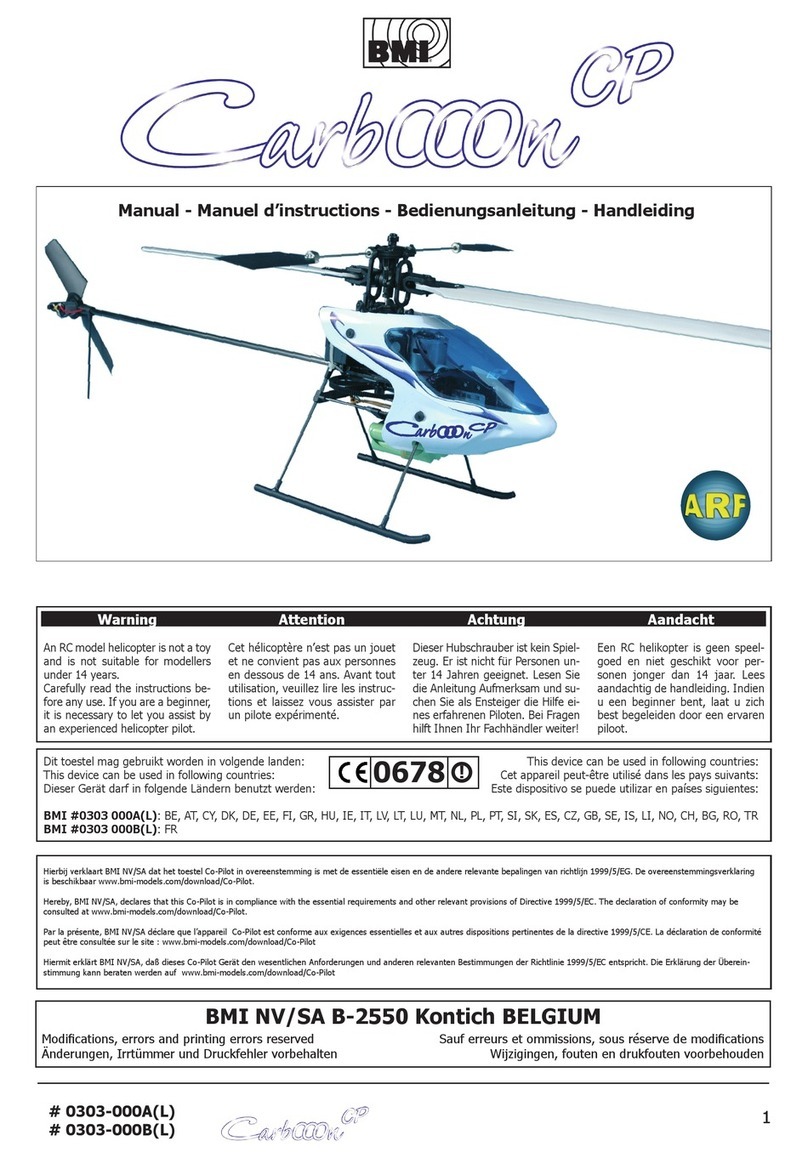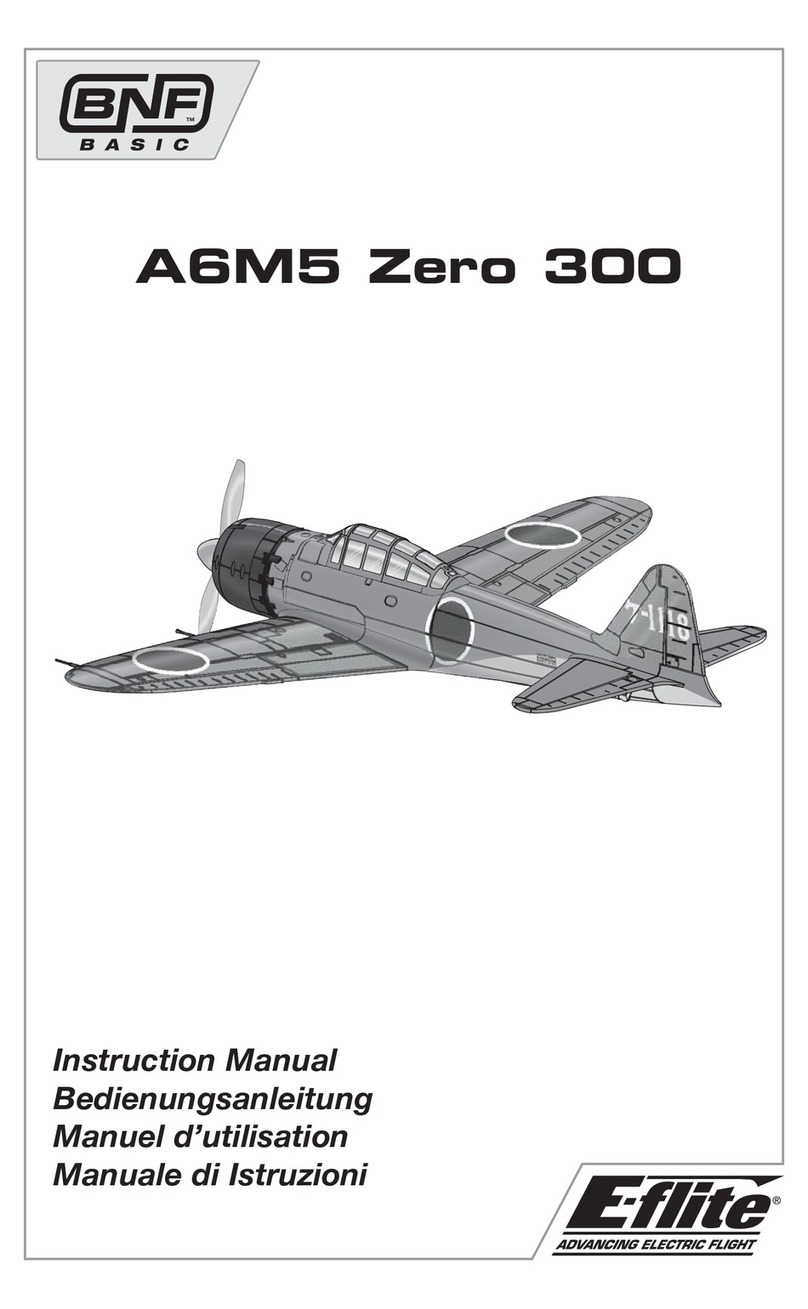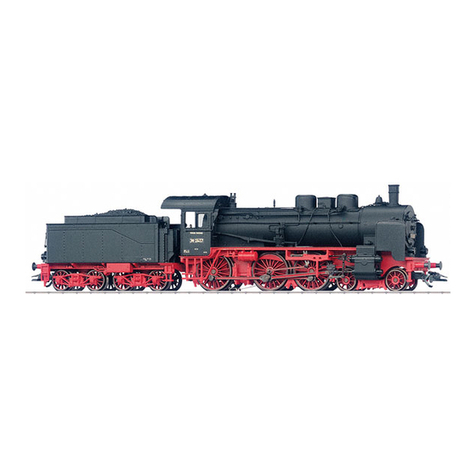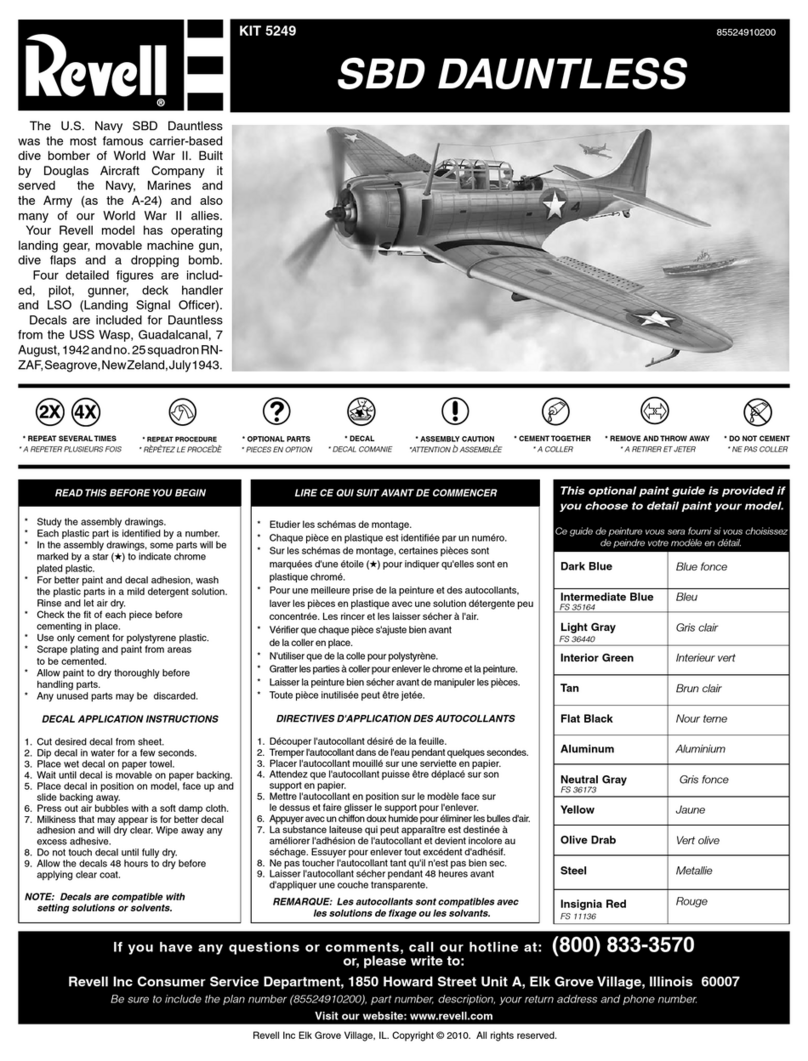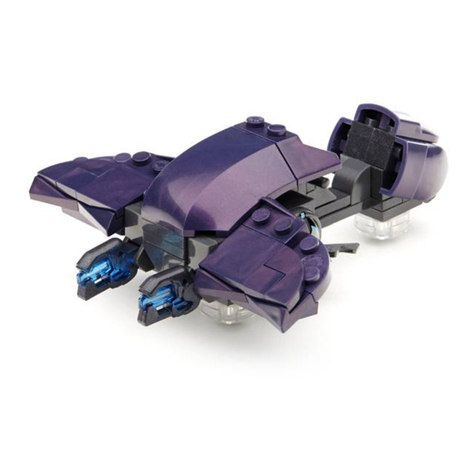
www.bmi-models.com 6
5. Radio check as follows:
a) Collapse the antenna.
b) Before switch on your transmitter, make sure that the throttle stick is at its lowest position.
c) Turn on the transmitter first, and then the receiver.
d) Move the controls to be sure that they are all functioning correctly.
e) Walk away from you model for at least 100feet (30meters) and check all the movements.
f) Press the start switch and gradually push forward the throttle stick to check if the speed controller (or
on/off switch) is functioning properly.
g) Don’t forget to extend the antenna of your transmitter to its full length before you start flying.
Flying the Valbella 2000
1. Whilst the Valbella 2000 will fly in wind up to and over 20 mph, we suggest you choose a day with less than
15mph breeze for initial flights. After final double-checking the controls for operation, the motor should be
switched on and the model hand-launched parallel to the ground and directly into the wind. Never throw it
upwards, as it may cause the plane to stall and crash before it reaches airspeed.
2. Initially keep flying directly into the wind with slightly correcting signals to the ailerons. At the same time the
model should be made to climb with slight up-elevator control if necessary.
3. Should the plane has any tendency to turn or dive on its own accord, the movement should be prevented by
opposite use of the transmitter controls, and as quick as possible correcting trim control should be applied from
the transmitter.
4. When the model has reached over 100 feet climbing into the wind, you can try a “gently” turn to the left or
right to commence a circler to bring the Valbella 2000 back to your flying position in repeat a controlled flight
back into the breeze. Do not let the model fly “down wing” behind you at any time, until you have become an
experienced pilot.
Aerobatics, such as loops and rolls, are easy with the Valbella 2000, once it has been trimmed out for straight and
level flight. to do loops, merely face the model directly into the wind at a reasonable height. After a gentle dive
apply a medium, ”up” elevator, taking it half off at the top of the loop and applying it again as the plane dives on
final part of the maneuver. Flying directly into the wind and then applying right or left aileron control commences
rolls again. It is important, when the model is half way through its roll and on its back inverted, to give medium
“down” elevator to keep the aircraft level. Similarly you can roll the plane upside down and fly inverted provided
you apply the required amount of “down” elevator. Directional control whether flying upright or inverted is easy
with the use of aileron movement.Valbella 2000 BMI # 11620
BAUANLEITUNG
Bedienungsanleitung
Achtung, den Valbella 2000 ist kein Spielzeug ! Wenn ein R/C Flugzeuge nicht korrekt zusammgengebaut,
nicht korrekt geflogen und gewartet wird, könnte es bis zu ernsthaftige Verletzungen und/oder
Eigentumsbeschädigung führen. Der korrekte Zusammenbau, das Gebrauch sind keine intuitive Fähigkeiten.
Diese Fähigkeiten sicher und kompetent durchführen fragt Erfahrung. Wenn Sie nicht bereits ein erfahrener R/C
Flieger sind, schlagen wir vor, daß Sie einen erfahrenen Modellierer finden, um Sie zu unterstützen.
Bauanleitung
Sie haben sich für ein ausgezeichneter E-Segler entscheiden. Dafür danken wir Ihnen. Um Ihnen den sicheren
Betrieb dieses Modells zu erleichtern, sollten Sie unbedingt diese Anleitung vor der erste Inbetreibsnahme genau
durchlesen.
Technische Daten
Spannweite : 2000 mm
Tragflächeninhalt : 34.6 Dm²
Länge : 1024mm.
Fluggewicht (max.) : 1430g.
Motor : 550(ou 600) direct drive
Faltender Propellor : 8 × 4














